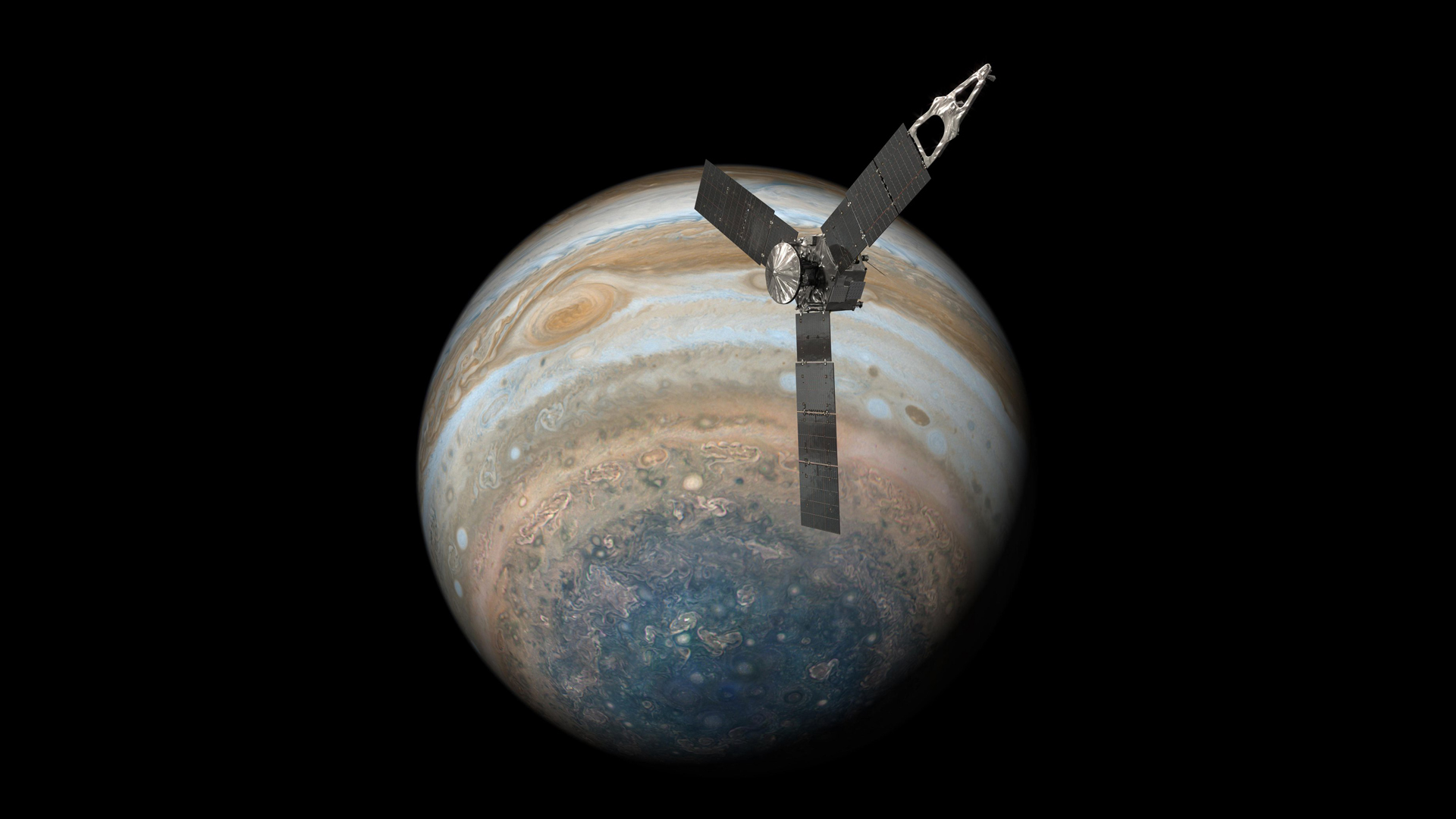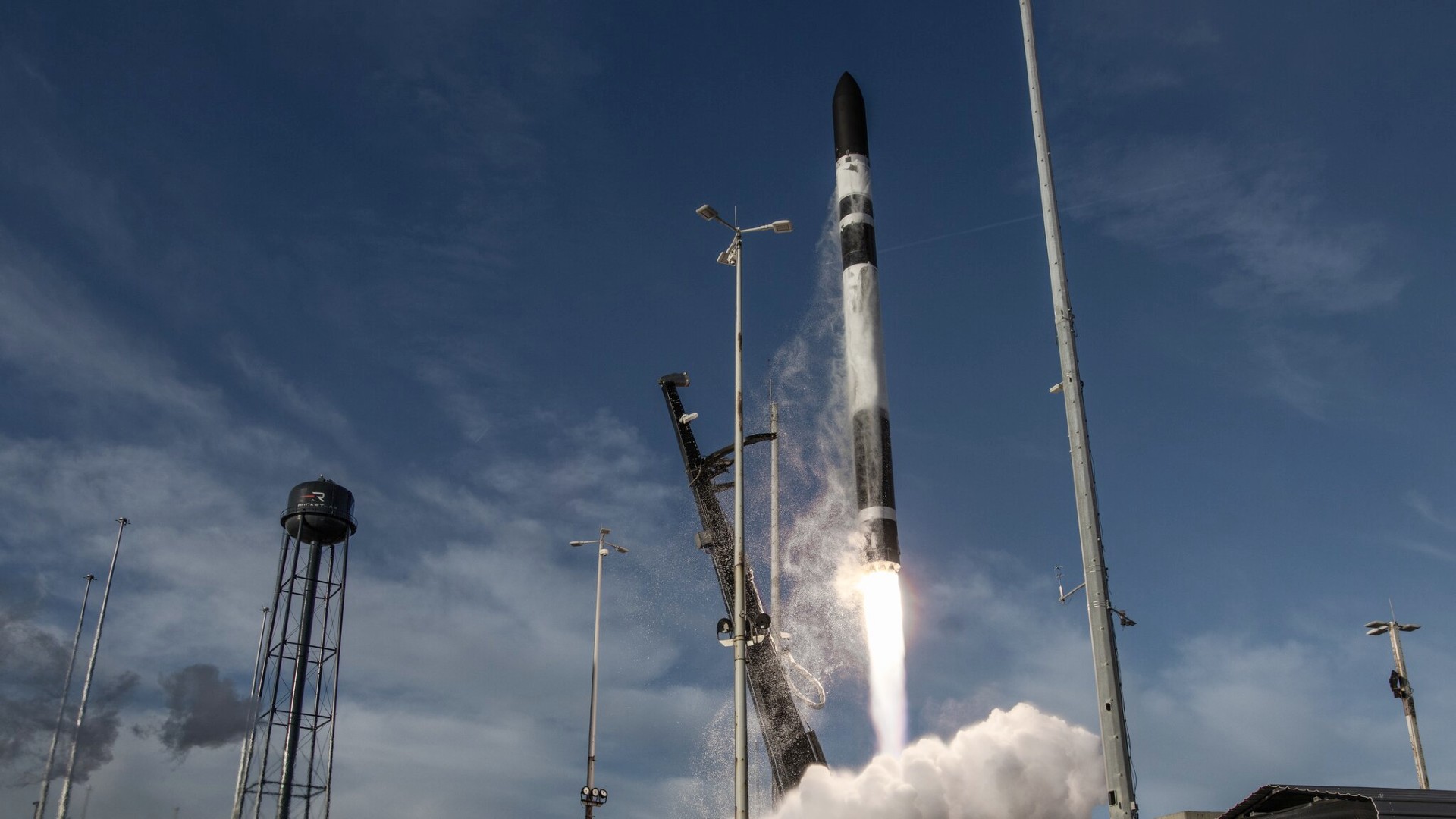NASA's Juno probe orbiting Jupiter may have come to an end, but no one can confirm
The U.S. government shut down the same day Juno's last mission extension expired.

NASA's spinning spacecraft studying the satellites of the solar system's largest celestial body (aside from the sun), may already be switched off, but the space agency won't say.
The Juno probe launched in 2011 and entered orbit around Jupiter in 2016, beginning what was originally planned as a 20-month mission. Nearly a decade later, the spacecraft has delivered unprecedented research of the Jovian system, observing the gas giant, its many moons and faint ring system long past its intended lifespan.
NASA has extended Juno's mission multiple times, most recently in 2021, guaranteeing operations through Sept. 30, 2025. That date has now passed, and with the U.S. government shut down, there is no word yet on whether Juno will come out alive on the other side.
Juno's latest extension broadened its mission from studying Jupiter's interior and magnetosphere to include the planet's rings and observations of its large moons.
"By extending the science goals of this important orbiting observatory, the Juno team will start tackling a breadth of science historically required of flagships," Lori Glaze, NASA's planetary science division director at the time, said in a statement. And Juno has done just that.
Over the past several years, the spacecraft has conducted close flybys of the moons Ganymede, Europa and Io, delivering data on their geology, environments and composition. Juno has also investigated Jupiter's faint ring system, while continuing to map the planet's powerful magnetic and gravitational fields.
These results have contributed to preparations for upcoming missions like Europa Clipper, NASA's next major Jupiter spacecraft. Europa Clipper launched in Oct. 2024, and is scheduled to arrive at Jupiter in April 2030 to study the moon after which the spacecraft is named. Ending Juno's mission before Europa Clipper's arrival would create a years-long gap in dedicated observations of that part of our solar system, leaving scientists without new data until the end of the decade.
Breaking space news, the latest updates on rocket launches, skywatching events and more!
In an email shared with Space.com, NASA Planetary Science Division Media Lead Molly Wasser referenced Juno's 2021 extension saying the "mission was extended to September of 2025. This is the most recent update. Regarding the future of the mission, NASA will abide by the law."
Due to the government shutdown, NASA is currently unable to say whether Juno is still operating or already powered down. At the time of publication, responses from agency officials state that "NASA is currently closed due to a lapse in government funding … Please reach back out after an appropriation or continuing resolution is approved."
Under shutdown rules, only missions that fall under "excepted activities" — those required to protect life, property, or national security — can continue operations or communications. NASA's continuity plans also specify that carryover funding may only be applied to "presidential priorities," which limits what science programs can proceed during a lapse.
Juno does not fall into those protected categories, and was also zeroed-out on the President's fiscal year 2026 budget request — making the mission, presumably, not a priority. So, until normal government operations resume, the spacecraft's future is uncertain.

Josh Dinner is the Staff Writer for Spaceflight at Space.com. He is a writer and photographer with a passion for science and space exploration, and has been working the space beat since 2016. Josh has covered the evolution of NASA's commercial spaceflight partnerships and crewed missions from the Space Coast, as well as NASA science missions and more. He also enjoys building 1:144-scale model rockets and human-flown spacecraft. Find some of Josh's launch photography on Instagram and his website, and follow him on X, where he mostly posts in haiku.
You must confirm your public display name before commenting
Please logout and then login again, you will then be prompted to enter your display name.
